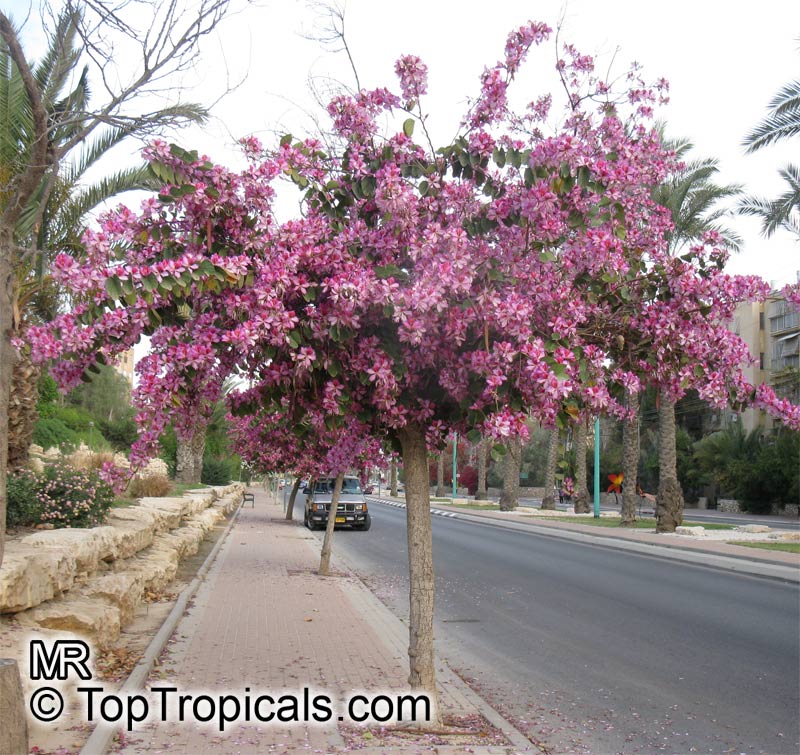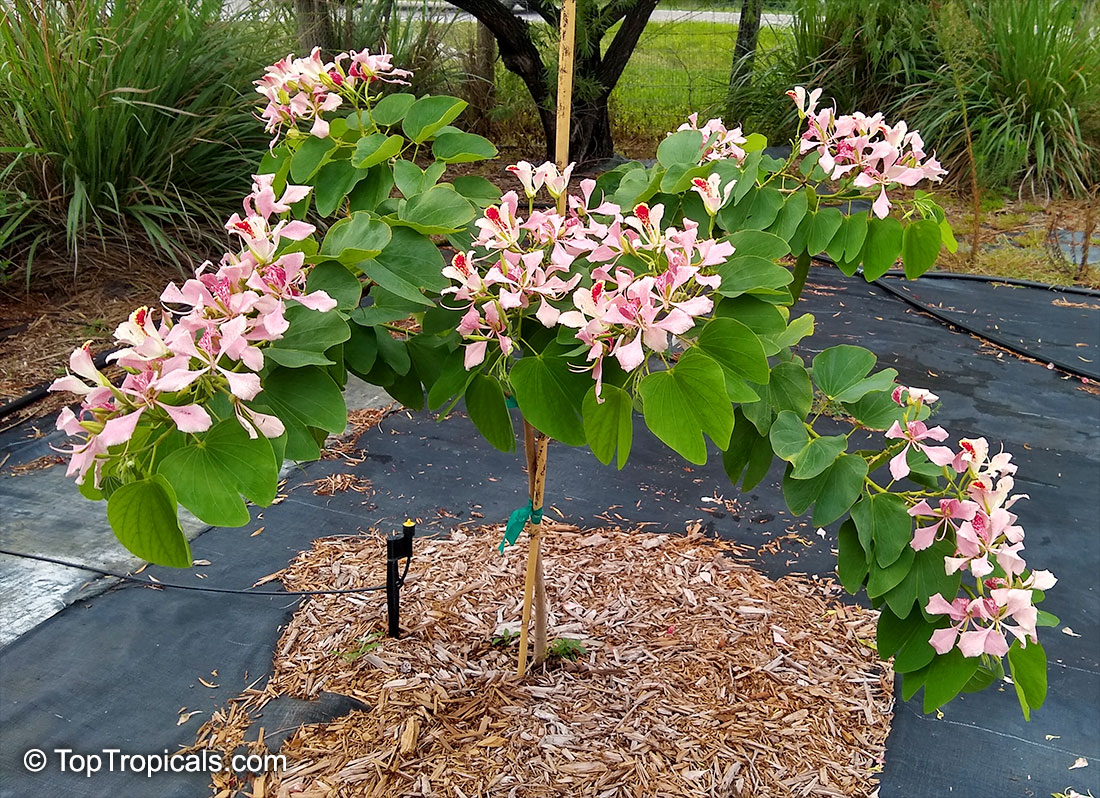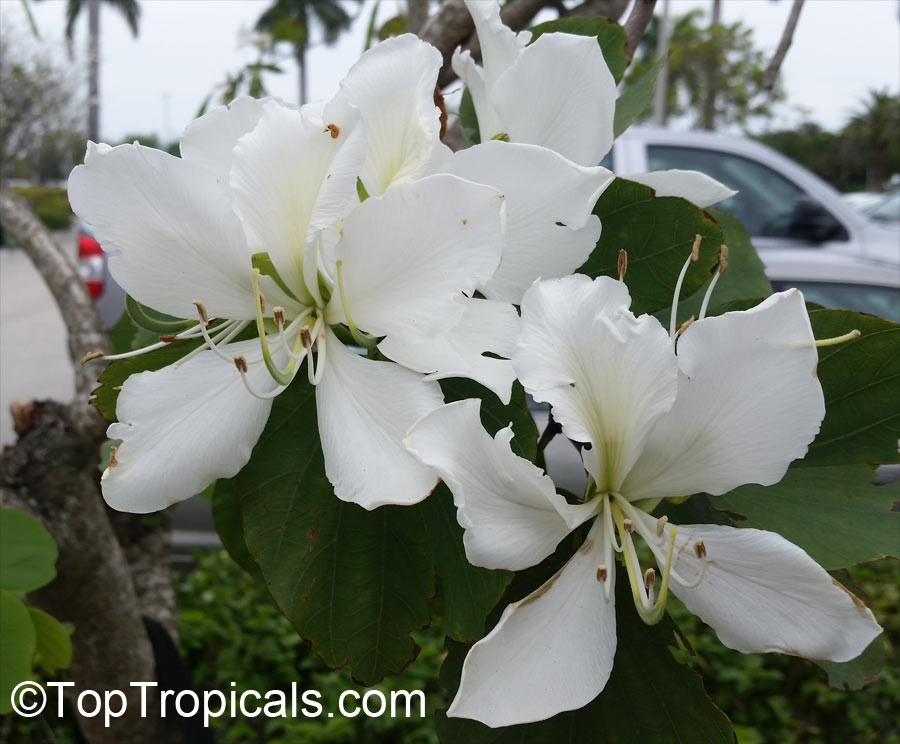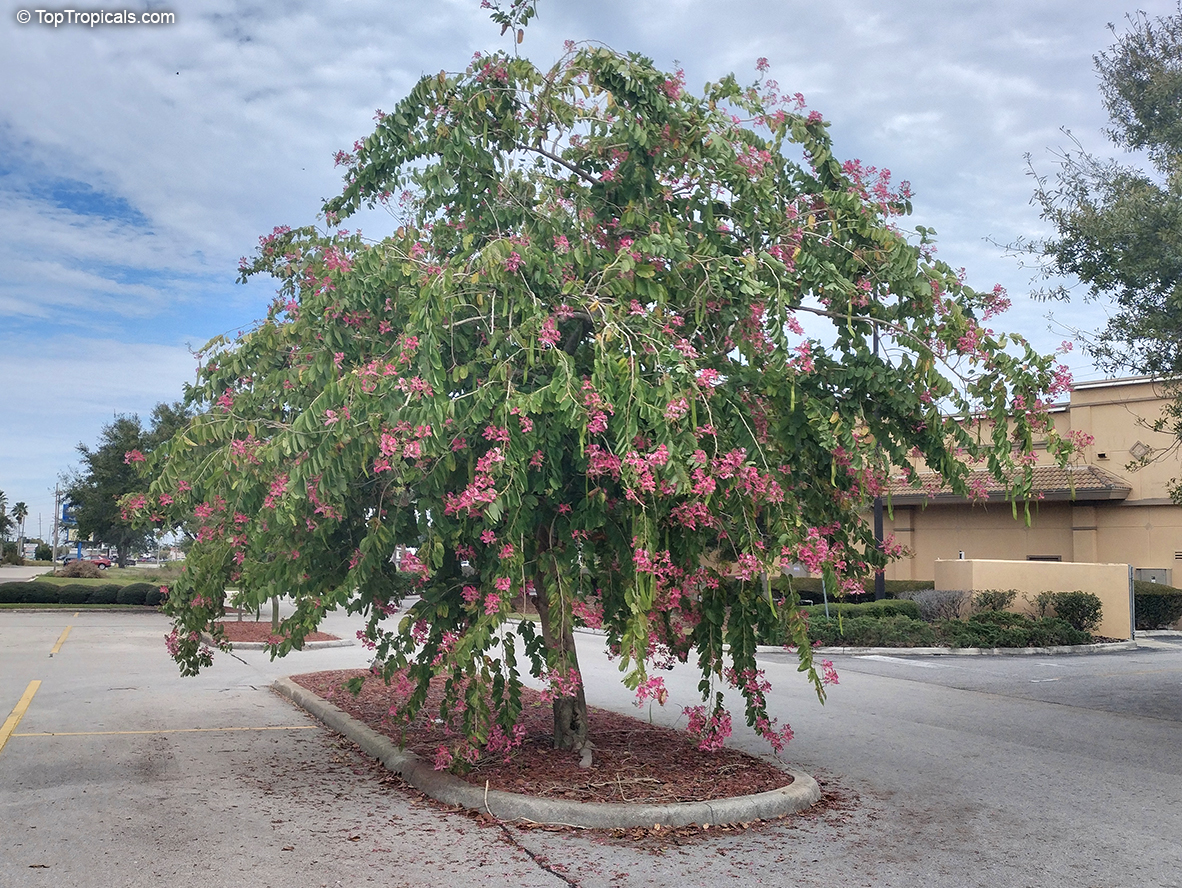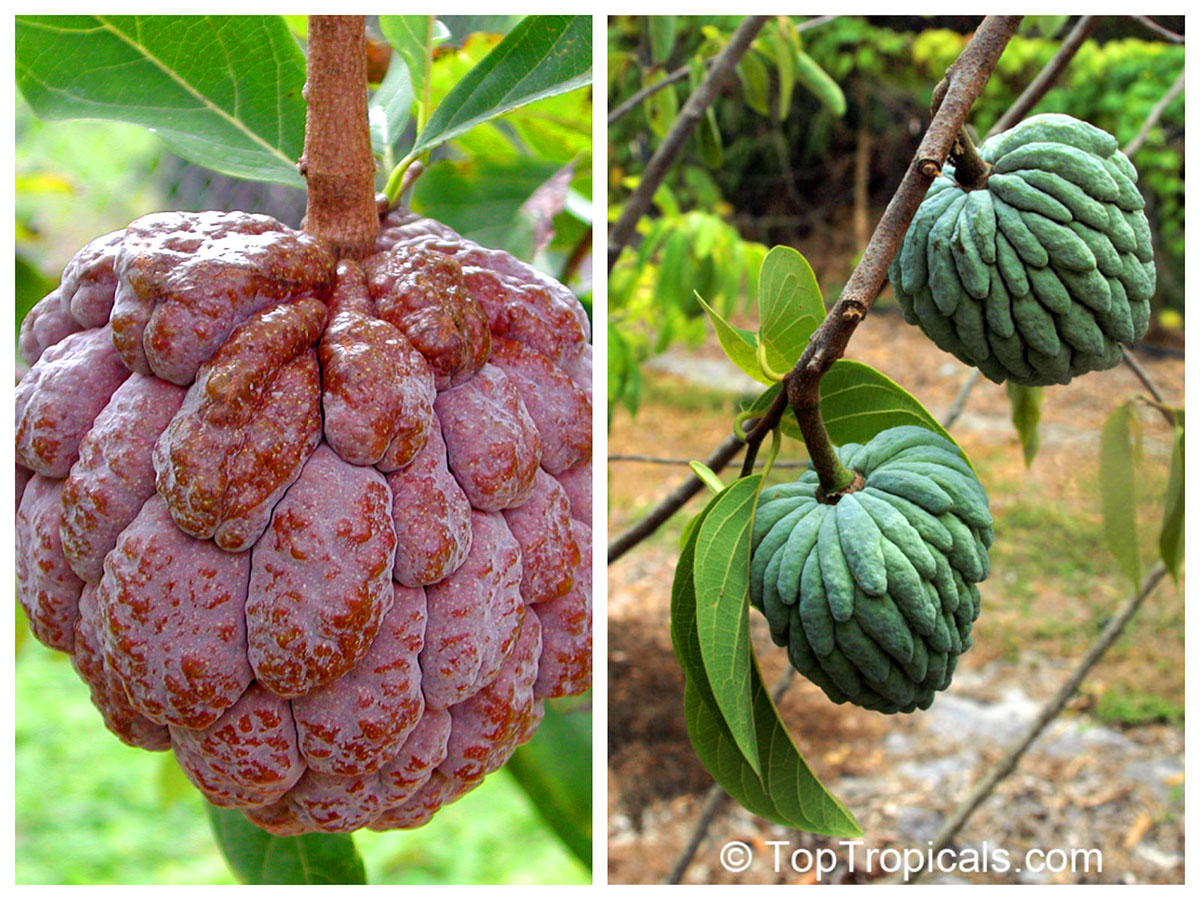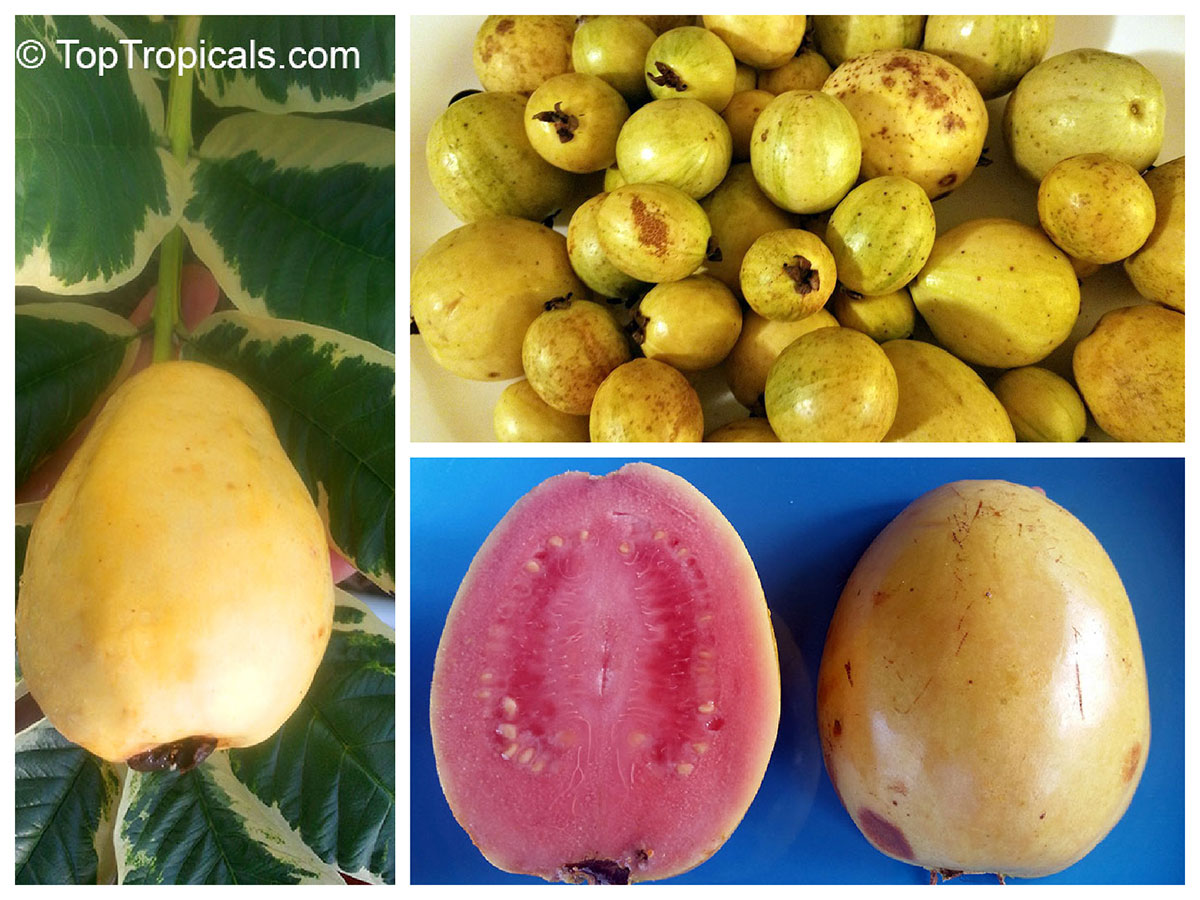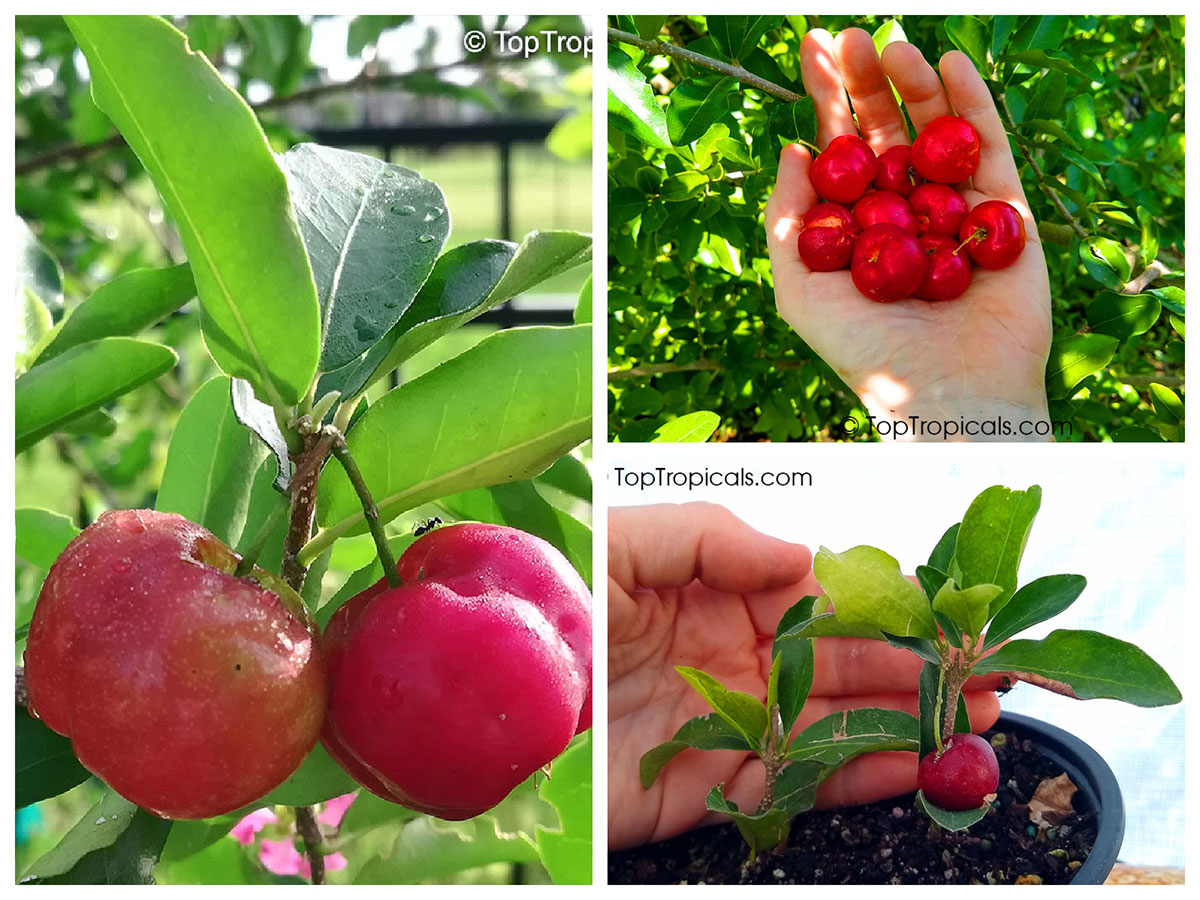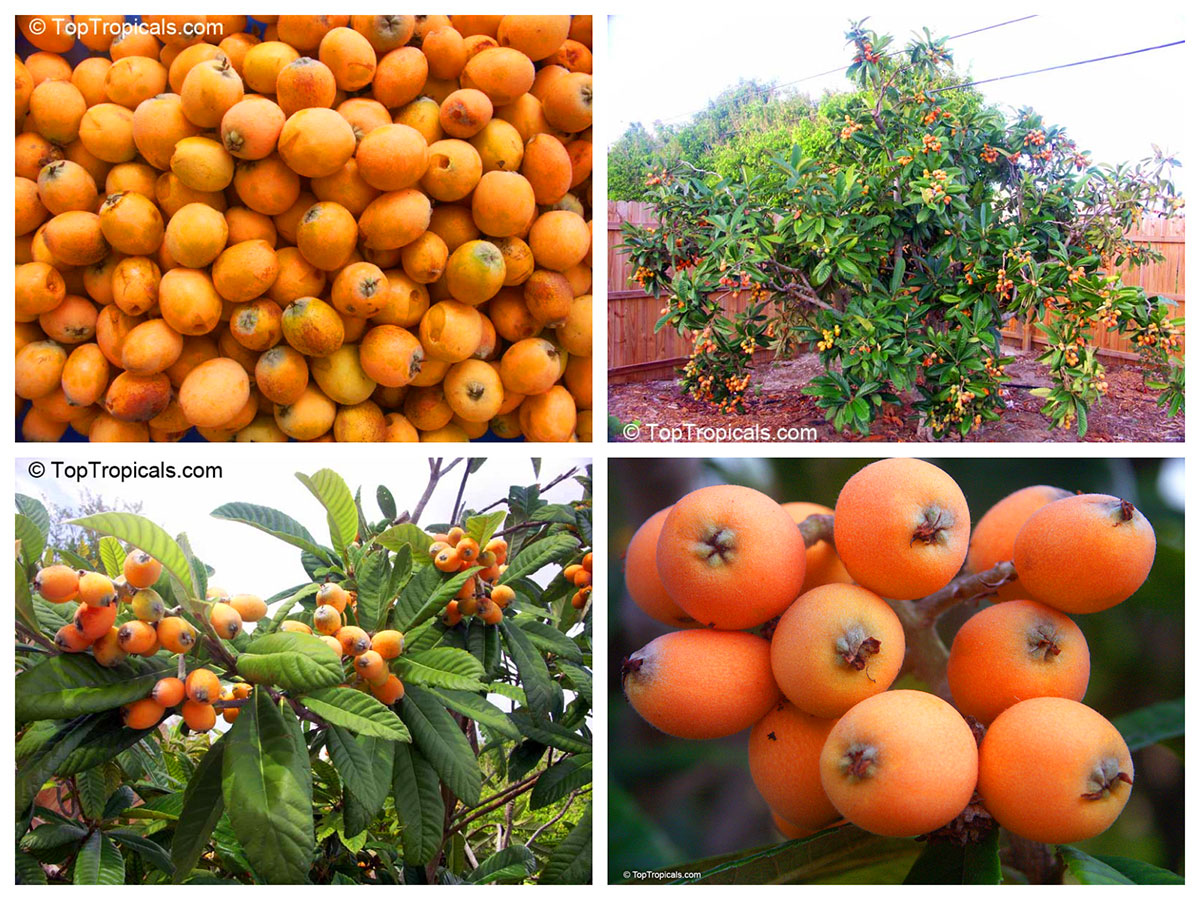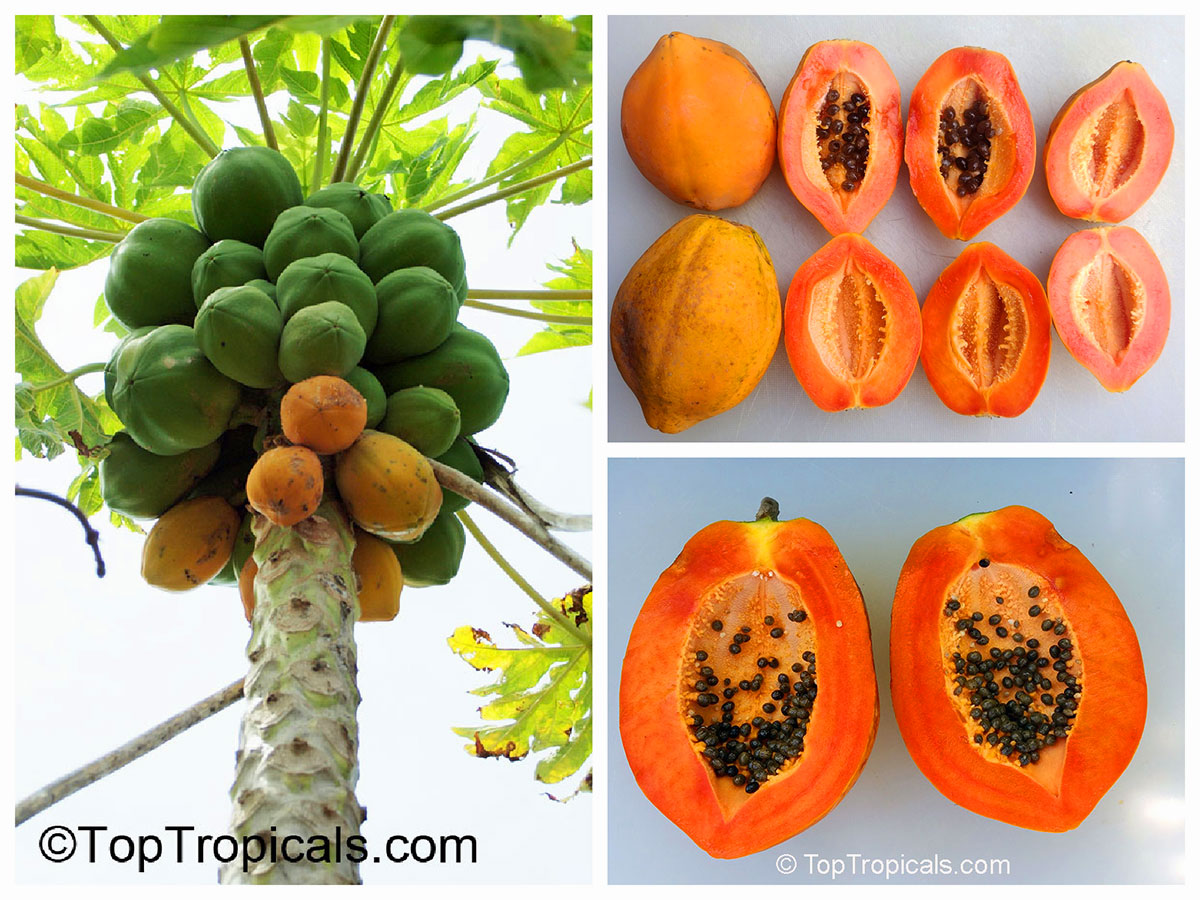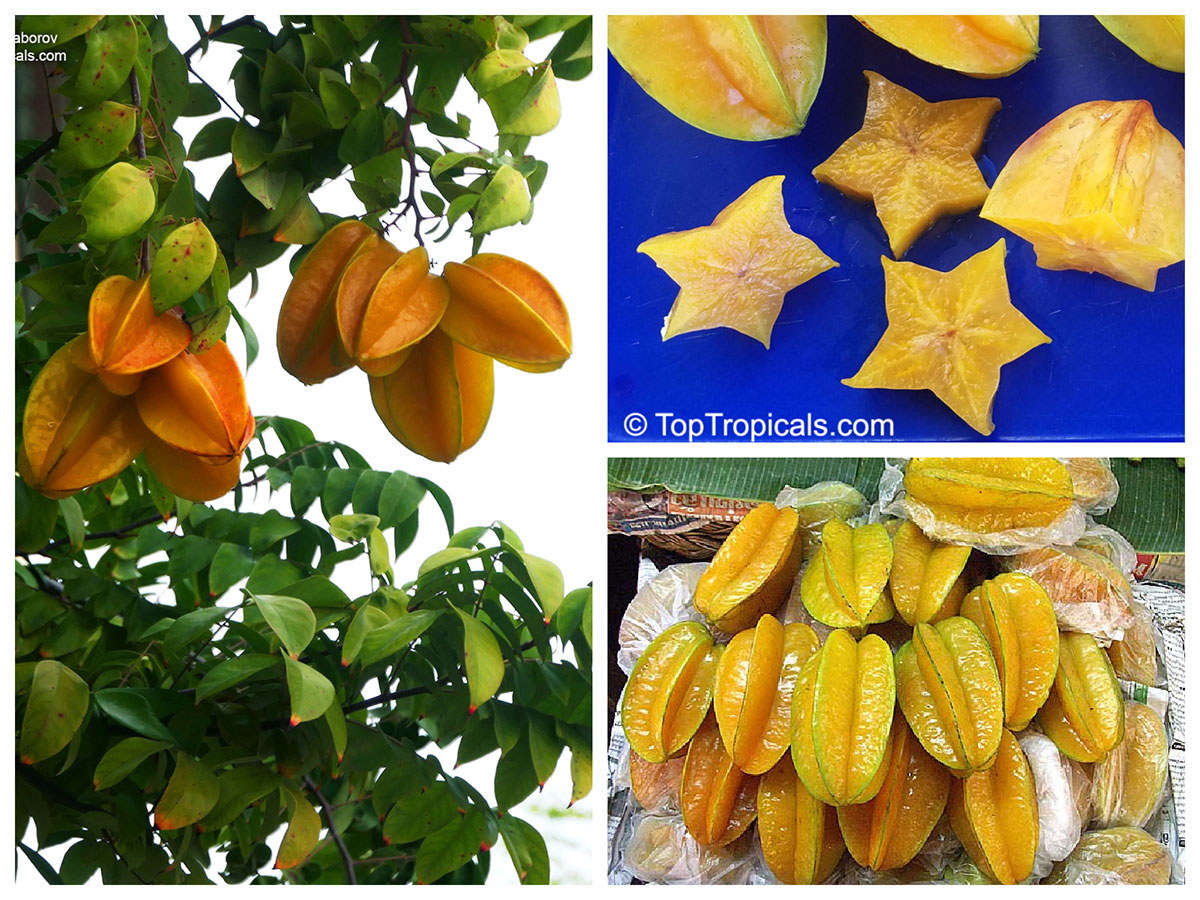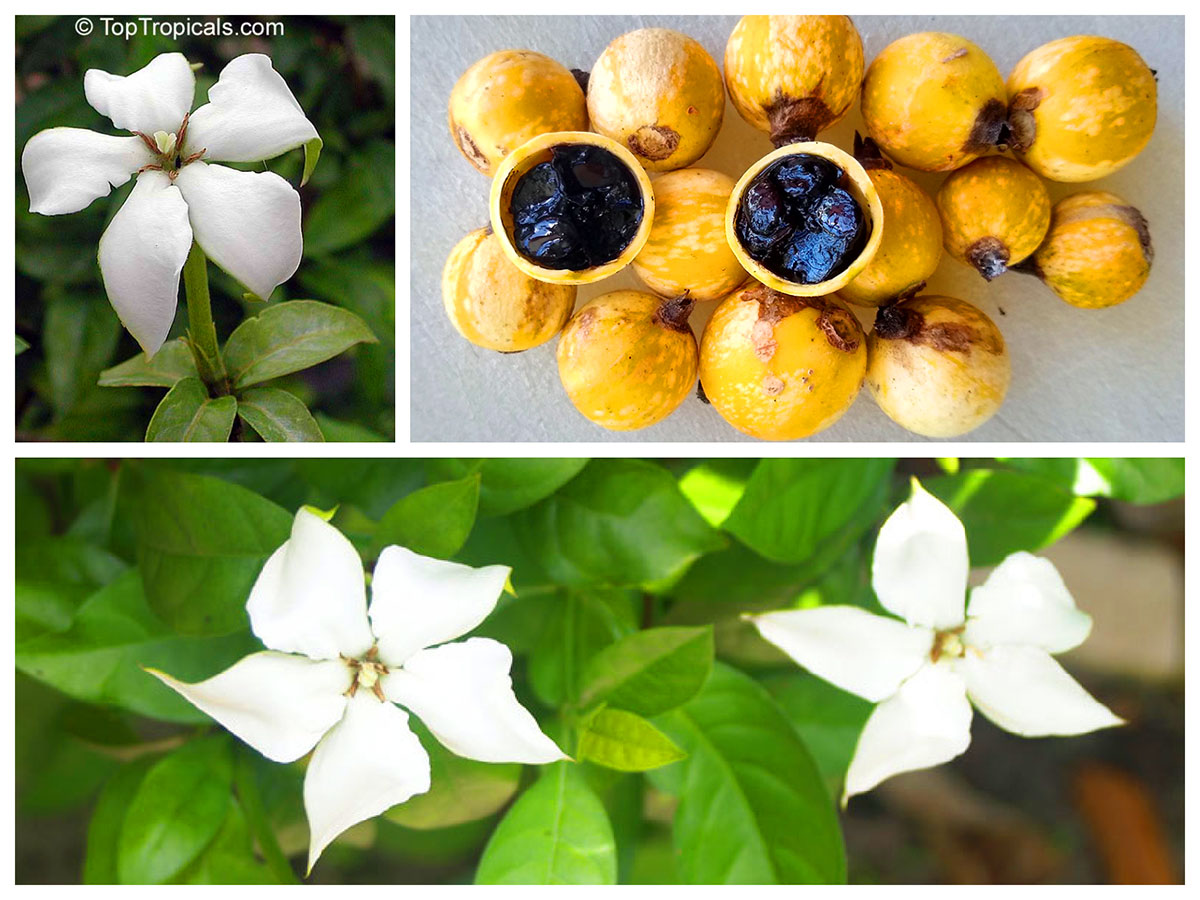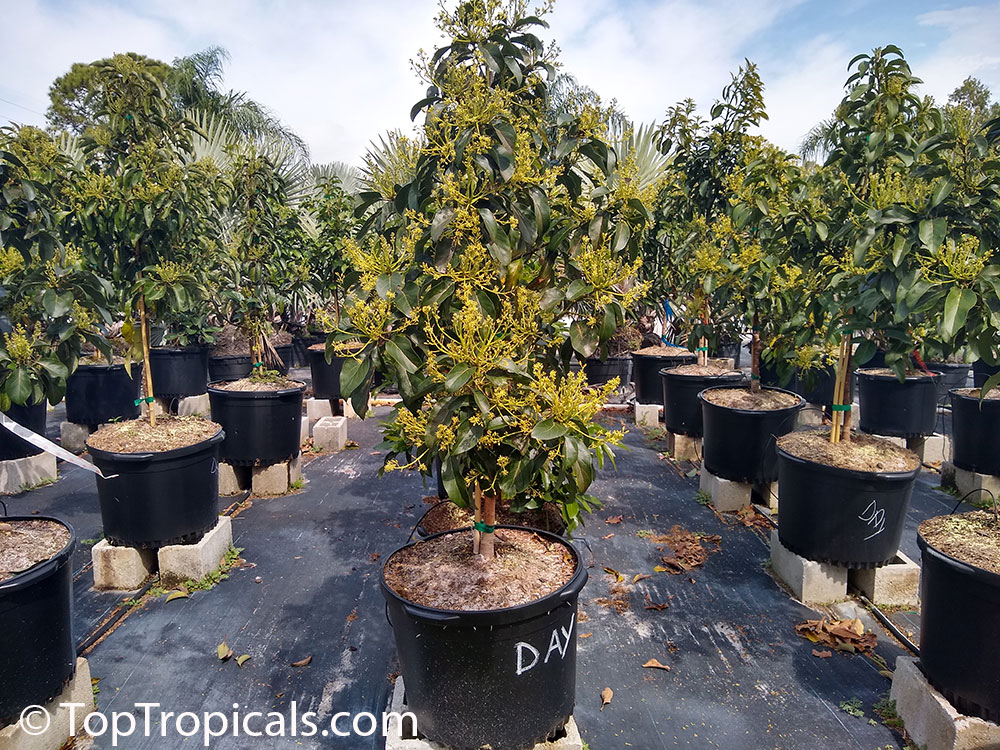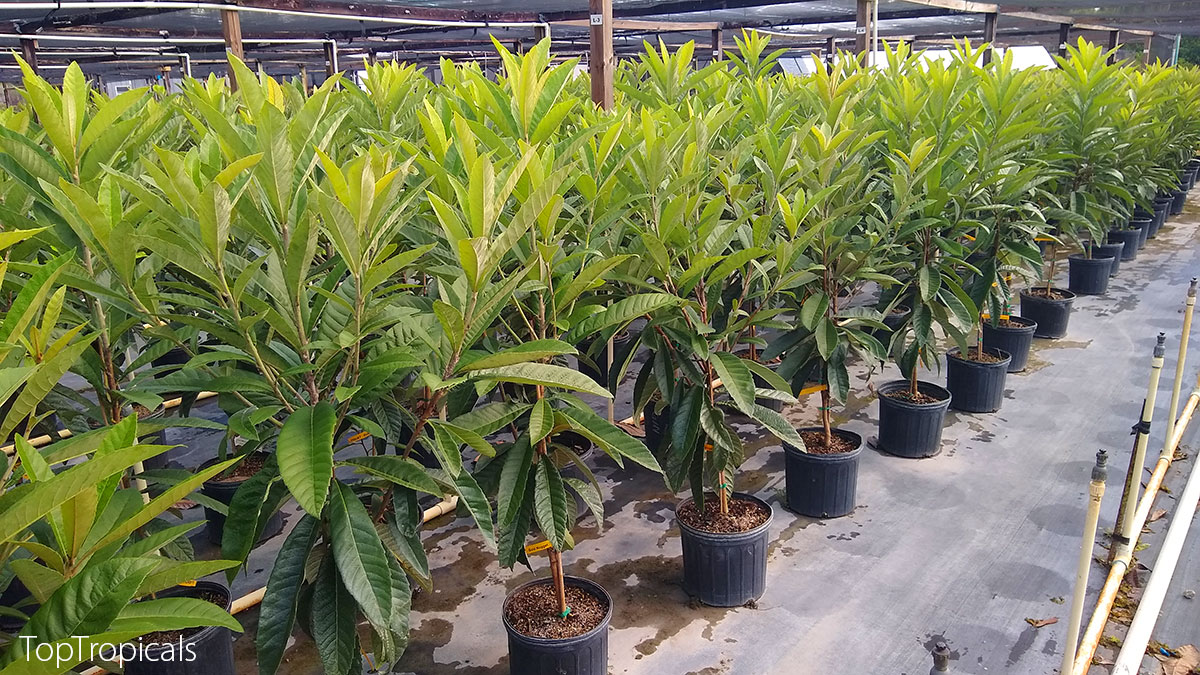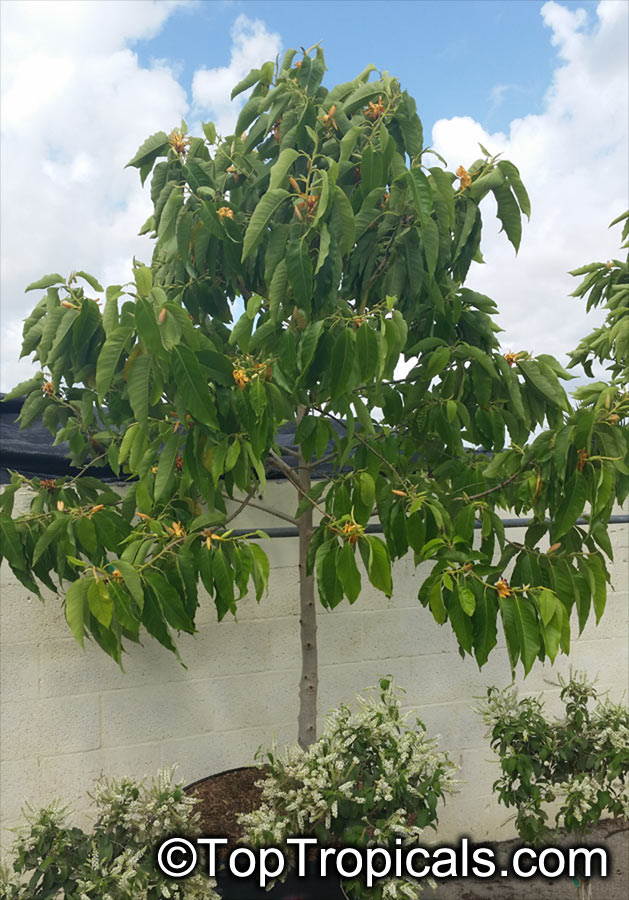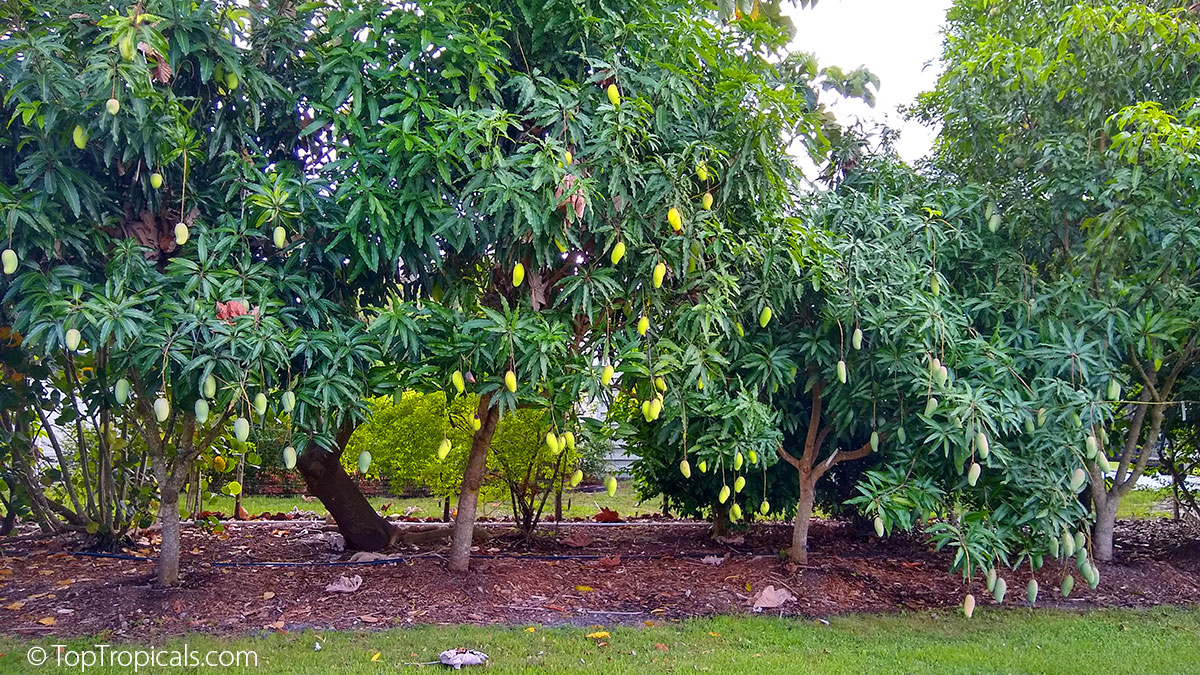Garden Blog - Top Tropicals
How to choose the right flowering trees for your landscape
Phymosia umbellata - Cranberry Malva Aparasolada
- 🌷 There are so many flowering and blooming trees to choose from, where should you start? Well there are plenty of questions to ask and several answers for each.
- 🌷 Are you looking for trees that bloom in winter or are you looking for summer flowering trees? Maybe you are looking for the fastest growing shade tree. The choices are endless. Depending on your answer, there may be several trees that meet your needs.
- 🌷 One good place for beginners and even seasoned growers is to use the search features in our Top Tropicals Plant Encyclopedia. Here you can search by name, size, growth habit, light requirements, watering needs, color of bloom and cold hardiness.
- 🌷 You will be able to search for trees that attract butterflies and even those that are salt tolerant if you live near the ocean.
- 🌷 If you choose the small tree category, you will find small flowering trees and even dwarf flowering trees or bonsai starters.
🎥 Phymosia umbellata - Cranberry Malva Aparasolada
🛒 Shop flowering trees
#Trees #How_to
🔴 Join 👉 TopTropicals
How to grow Orchid Trees in pots
Orchid Trees in pots
Everyone loves beautiful Orchid trees with butterfly-like leaves and colorful orchid-like flowers. They are widely used in Southern landscapes. But what if you don't have a room in your garden for another tree? Or what if it gets too cold in winter for a tropical Orchid tree? You can grow it in a pot!
📝 This is how to n enjoy the stunning flowers and foliage of Bauhinia right on your patio or balcony:
- 💠 Choose the right variety. Some species suitable for containers:
- 💠 Choose the right pot: Select a large, sturdy pot with good drainage holes. Bauhinia trees have a vigorous root system
- 💠 Use a well-draining potting mix. We recommend a professional soilless mix: Sunshine Abundance.
- 💠 Sunny location: Position the pot in a location that receives full sun to partial shade. Bauhinia plants thrive in warm, sunny conditions.
- 💠 Watering: Keep the soil slightly moist but not waterlogged. Water the plant when the top inch of soil feels dry to the touch.
- 💠 Fertilizing: For the most profuse flowering like in the video, feed the Bauhinia with liquid Sunshine Boosters Megaflor year around, it's safe with every watering.
- 💠 Pruning: Prune the plant to maintain its shape and encourage bushier growth.
- 💠 Winter Care: If you live in a region with cold winters, bring the pot indoors or to a sheltered location to protect the plant from frost.
B. galpinii, B. madagascariensis, B. monandra, B. alba (candida), B. acuminata, B. bidentata, B. blakeana, B. grandidieri and many others.
📸 Bauhinia monandra - Napoleons Plume Orchid Tree, starts flowering when only 2 ft tall and grows well in containers.
📚 Earlier posts on Bauhinias: 1 2 3
Bauhinias: trees with Orchid Flowers and Butterfly Wings
🛒 Shop Orchid Trees
#Container_Garden #How_to
🏵 TopTropicals
Date:
Bauhinias: trees with Orchid Flowers
and Butterfly Wings...
Photo above: Bauhinia variegata - Purple Orchid Tree, one of the most spectacular varieties.
Q: We just moved to Florida and I see these beautiful trees with large purple flowers. I was told these are Orchid trees, do you have them?
A: Bauhinias, commonly known as Orchid trees, are renowned for their captivating flowers and unique foliage. These trees typically grow to a moderate height of 15-25 feet with a spread of 10-15 feet, showcasing a rounded to vase-like shape. Thriving in hardiness zones 9-11, they exhibit resilience to heat and can withstand mild frost. There are over 300 species of Bauhinia, which are distributed in tropical and subtropical areas. These species vary in characteristics such as size, foliage, and flower color, contributing to the diversity and appeal of this genus. You can find them as trees, shrubs, and even vines.
Bauhinias are evergreen (in tropics) to semi-deciduous (in cooler climates), offering year-round beauty with intermittent blooming cycles. The peak bloom time varies depending on the species and location, often occurring in late winter to early spring, bedecking the tree with striking orchid-like flowers in hues ranging from white and pink to purple and red. The flowers boast delicate petals with intricate patterns, resembling the elegance of true orchids.
One of the distinguishing features of Bauhinia leaves is their unique bi-lobed or bilobed structure, which gives them a distinct appearance. The leaves are deeply divided, typically into two lobes or halves, hence the common name "Butterfly tree" due to their resemblance to butterfly wings. This characteristic is often used as an identifying trait for Bauhinia species. The bilobed leaves add to the visual appeal of the tree, contributing to its ornamental value in addition to its beautiful flowers.
Photo above: Bauhinia monandra - Napoleons Plume, starts flowering in small size. This one is very beautiful but the most cold sensitive and should be grown in pots in areas with winter freeze. It will happily bloom in container!
Low-maintenance by nature, Bauhinias require minimal upkeep. Annual feeding with a balanced fertilizer enhances growth and flowering. Pruning is generally optional but can be done in late winter or spring, after flowering, to maintain shape or remove dead or damaged branches. These trees thrive in full sun, preferring well-drained soil. With their enchanting blooms and easy care requirements, Bauhinia orchid trees are a delightful addition to any landscape, and a colorful specimen for tropical winter gardens.
In addition, Orchid trees grow fast and provide excellent shade. They can make a shady spot in your garden in no time, giving relief from the hot sun. This is really valuable, especially in places where it gets very hot. So, not only are Orchid trees pretty to look at with their lovely flowers, but they're also great for keeping you cool!
Read more about Bauninias:
Bauihnias: Orchid trees with Butterfly flowers... and leaves
Photo above: Bauhinia x alba (candida) - White orchid tree, the most cold hardy variety that can take light freeze once established.
Photo above: Bauhinia purpurea - Purple Orchid Tree, one of the most popular and easy trees in Southern landscapes.
How to protect Mango Trees from Cold Weather
🌞 Mango trees love warm weather. They grow best in temperatures between 70F to 100F.
📍 Cold weather can be harmful to mango trees: when the temperature drops below freezing, trees can get damaged. Frost can hurt young leaves and flowers, reducing the amount of fruit.
💬 Ways to protect mango trees from cold
🔹 Right location: Plant in sunny areas with protection from cold winds.
🔹 Cover them up: Use blankets or frost cloth to protect young trees.
🔹 Add mulch: Helps keep the roots warm during cold weather.
🔹 Move potted trees: Bring them inside when it gets too cold.
🔹 Use Sunshine Boosters to improve tree hardiness
➡ Fertilized mango trees are stronger and more resilient.
- ➡ They grow faster and have better root systems, making them more hardy against cold weather.
- ➡ Sunshine Boosters provide the essential nutrients needed for strength and vigor, helping plants recover faster from cold damage.
Sunshine Boosters "Mango Tango" makes mango trees stronger and more resistant to cold. A well-fed tree can survive cold better and produce more fruit. With Sunshine Boosters, you ensure your mango trees stay healthy, even in chilly weather!
📚 Learn more from the articles:
Mango trees and how to deal with cold weather
How to fertilize your Mango trees
📸 See photo in the next post👇
🛒 Shop Sunshine Boosters
#Fertilizers #Mango
🔴 Join 👉 TopTropicals
Date:
Top ten fast-fruiting trees
Q: I would like to plant several fruit trees... I am 85 years old and hope to see them fruiting soon. What fruit trees can you recommend that will fruit quickly?
A: Most grafted fruit trees, such as Mango, Avocado, and Peaches, will fruit quickly - often within the same year or the next. There are also many wonderful tropical fruits that will produce for you within a year or two, even without the need for grafting. Below are the top 10 of most popular, most rewarding and easy to grow fast fruiting tropical trees:
1. Annona - Sugar Apple, Custard Apple.
Annonas are the fastest fruiting trees: 2-3-4 years from seed to fruit, depending on species. They are the best tropical fruit trees suited for container growing, due to their small height and can be maintained within 6-8 ft tall.
2. Guava (Psidium sp.): Cattley and Tropical guava
Guava is a reliable producer, starts fruiting in a pot at small size. Some varieties, especially Cattley guavas - Psidium littorale - are relatively cold hardy and can take some frost without damage. Guavas are fast growing small trees or large bushes.
3. Eugenia - Tropical Cherries
Eugenias are favorites of Southern gardens. They are relatively cold hardy and start producing right away. Black Surinam Cherry Lolita and Grumichama are our favorites!
4. Barbados Cherry (Malpighia glabra)
Another exceptional tropical cherry is Barbados Cherry. It is super popular as a heavy producer. The plant can start fruiting when it's only a few inches tall! If you are looking for a compact, but fast growing tree with colorful fruit that starts fruiting right away - plant Barbados Cherry. It will also happily fruit in containers.
5. Eriobotrya (Eriobotrya japonica)
Loquat tree is fast-growing, drought-tolerant, cold-tolerant, compact tropical fruit tree. It is a heavy producer. Fruits are juicy, aromatic, and resemble apricots. Ripen from early Spring to early Summer. Ideal for small gardens, beginner fruit tree growers.
6. Papaya (Carica papaya)
Papaya is probably the fastest fruiting tree that can start production the same year from planting a seed. Many dwarf varieties available in selection, reaching only 6-8 ft tall, but producing large crops of full size fruit - they are easy to harvest. Plant 2-3 Papaya trees of different cultivars that fruit at different times of the year and enjoy heavy crops of healthy fruit year around! Another benefit - this tree doesn't take much space in the garden, you can plant as many as you want.
7. Mulberry (Morus hybrids)
Mulberry is very cold hardy and can grow in wide range of climate zones, from USDA 5 to 10. Everyone knows this sweet, tasty, juicy fruit. The tree will produce right away, you will see fruit the next season after planting, and the tree grows fast.
8. Carambola - Starfruit (Averrhoa carambola)
Growing Carambola tree is a fun and rewarding way to enjoy this unique star-shaped delicious fruit right at home. It fruits on the 3d year from seed. The tree is easy to grow and reliable producer, providing wind protection.
9. Blackberry Jam Fruit (Randia formosa)
Blackberry Jam Fruit, Jasmin de Rosa is a curious small evergreen tree or bush that combines features of a fragrant flower and delicious dessert fruit which tastes like fresh Blackberry jam. Fragrant white flowers are similar to Gardenia.
10. Peanut Butter Tree (Bunchosia argentea)
Peanut Butter Tree, earns its name from its fleshy fruits that boast a delightful peanut butter flavor. Compact in size, small tree reaching only 10-15 ft or kept as a bush, it's a perfect choice for limited spaces. Can thrive indoors, starting to fruit within just 2-3 years from seed.
Date:
When Bigger means Better
Everybody loves shopping online nowadays, and plants are no exception. Buying plants by mail order is not uncommon anymore; it only takes one click, and luckily, there are many sources - from big shopping malls like Amazon to small backyard nurseries that sell their seedlings on eBay or Facebook - all delivered to your door. But plants are alive... So when doing your online plant shopping, you must ensure that you fully enjoy your experience and are happy with a healthy plant that a) doesn't die; b) recovers quickly; and c) starts growing fast, so you can see flowers and fruit as soon as possible.
The rule of thumb for shipping plants: bigger plants undergo shipping better, experience less stress, less leaf drop, and recover quicker than plants with smaller root systems. So when it comes to buying plants online, the bigger, the better. Unfortunately, many mail-order plant sources may sell you a tiny twig that has very few chances of surviving. Shipping is very expensive today, so shipping a bigger size plant may cost more than the plant itself.
Below is a piece of advice on how to make the best plant selection for your garden...
Photo above: Loquat trees in 3 gal containers.
5 important rules on how to buy trees online
1. Find a source with bigger plants. Check reviews, ask friends
for recommendations, inquire from the company about the size of their plants
and how they pack their plants for shipping.
TopTropicals offers well-established, strong plants with developed root
system, in container sizes 1, 3, 7, 15 gallon, directly from a tropical
Florida growing farm. Our unique plant-packing techniques are state of the art!
2. Price not always reflects the size and quality of the plant
TopTropicals offers many deals, discounts and sales, while still
providing the biggest and strongest plants grown in real tropical conditions.
3. Most fruit trees must be grafted to produce good fruit. Make
sure you are not purchasing a seedling when it comes to Mango, Avocado,
Peaches and some other trees with named varieties that don't come true to seed.
TopTropicals offers only grafted - Mango,
Avocado and a large number of other tropical cultivars.
4. Pick up when possible from the nursery your ordered from, or
get a delivery, instead of shipping the plants. A drive to the nursery will save you more time and money in the
future, plus you can hand-pick the biggest and healthiest specimens.
TopTropicals is open 7 days a week for your convenience. Visit our Ft Myers Garden Center or Sebring Farm to select the biggest plants.
5. Take advantage of X-Large size plant material if you live
outside the tropical zone and are trying to zone-push your tropical garden.
Bigger plants will establish faster and have more chances to survive cold winters.
Again, it will save you money in a long run (although bigger plants may be
more expensive, but their survival rate is much higher when it comes to cold
nights).
TopTropicals offers X-Large flowering and fruiting trees (7-15-25
gallons), and most of the varieties you see in our online
store can be custom-ordered in big sizes. Delivery and installation
available.
Photo above: Avocado trees in 7 gal containers.
Photo above: Magnolia champaca - Joy Perfume Tree in 25 gal container.
Date:
Shade
Tree Discount Program
How to reduce an electric bill and energy costs?
Photo above: Cassia fistula - Golden Shower Tree - one of the most popular trees. This all time favorite is fast growing and elegant.
Q: How to reduce an electric bill and energy costs?
A: This summer is expected to be hot. And the next summer... and next... Want to reduce your electric bill and energy costs? There is an excellent solution: plant a shade tree! Once fully grown, these trees will help keep your house cooler and lower your energy expenses.
Today we are offering a special discount you can use for purchasing
trees that will keep your homes cooler in Summer and gardens warmer in Winter!
Check out Fast
Growing Shade Trees, as well as other flowering trees and fruit trees and use discount below:
GETSHADE
Your savings with this code:
5% off orders $100+
15% off orders $150+
20% off orders $200+
Excluding S/H. Excluding 15 gal material. Exp. 6-12-24
Photo above: Tabebuia - spectacular winter bloomer.
Photo above: Bauhinia blakeana - Hong Kong Orchid Tree. The most beautiful of all orchid trees.
Photo above: Mango trees now. Many varieties are vigorous, large trees.
Photo above: Cattley Guava Tree is an elegant solution for small spaces. Red Button French Kiss Ginger goes well with it!
Why getting bigger plants in bigger pots are a better choice than smaller ones
Stronger Roots: Bigger pots give roots more room to spread, making them stronger and healthier.
Easier to Establish: These plants adjust more quickly when planted, making them easier to care for.
Faster Growth: Plants will grow faster once planted in your garden, as their larger root systems help them absorb nutrients and water more effectively.
Better Resilience: Larger plants can handle stress, like temperature changes or less watering, better than smaller ones.
🍀 Choosing a plant in 3-7 gallon pot means a healthier, faster-growing plant with less work needed, than for 1 gal plant.
#Trees #How_to
🔴 Join 👉 TopTropicals
How cold hardy are palm trees and how to protect them in winter
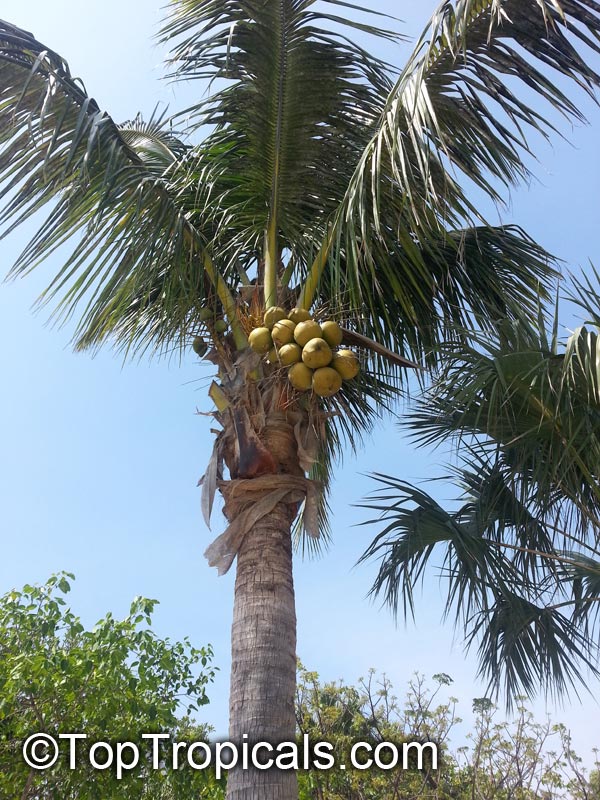
Coconut palm, Cocos nucifera

Fan palm - Licuala sp.
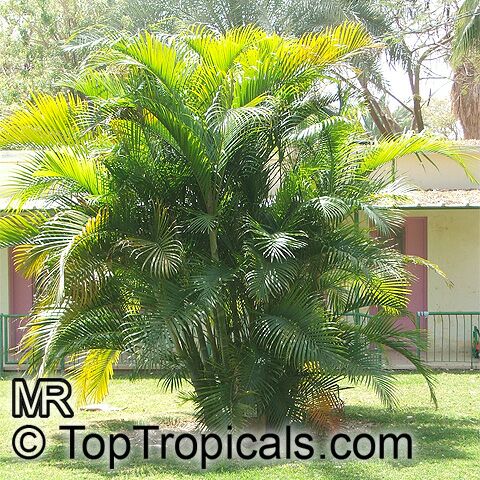
Areca palm - Areca (Dypsis) lutescens
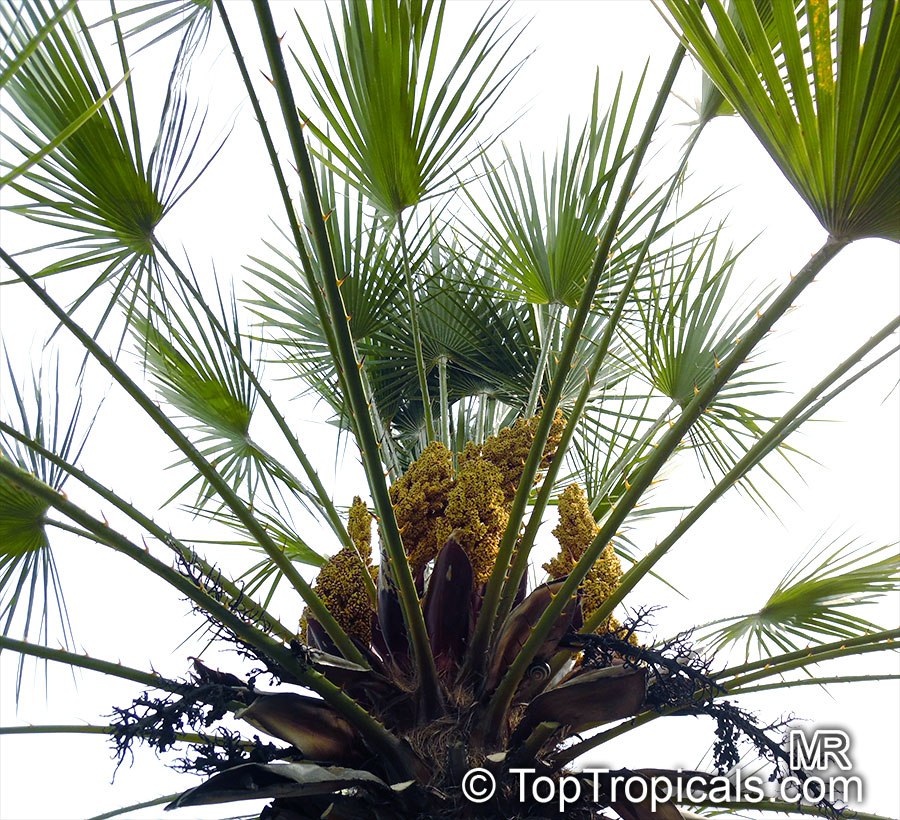
Windmill palm - Trachycarpus fortunei
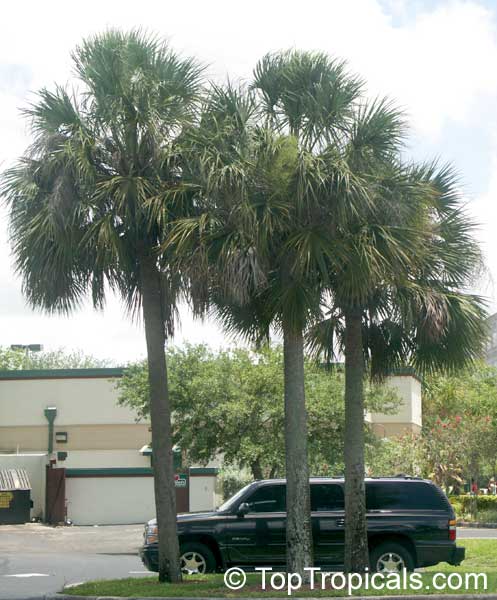
Cabbage palm - Sabal palmetto
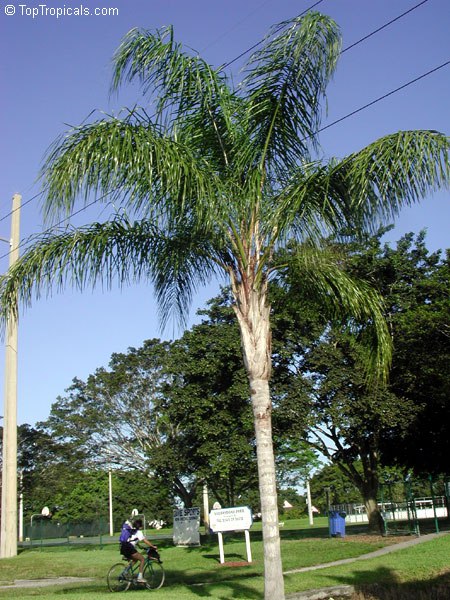
Queen Palm - Syagrus romanzoffiana

Majestic palm, Royal Palm - Ravenea rivularis

European fan palm - Chamaerops humilis

Date Palm - Phoenix canariensis
📷 In the photos:
🌞 Cold sensitive palms:
Coconut palm: Cocos nucifera
Fan palm: Licuala sp.
Areca palm: Areca (Dypsis) lutescens
❄️ Cold hardy palms:
Windmill palm: Trachycarpus fortunei
Cabbage palm: Sabal palmetto
Queen Palm: Syagrus romanzoffiana
Majestic palm: Ravenea rivularis
European fan palm: Chamaerops humilis
Date Palm: Phoenix canariensis
🛒 Shop Palm Trees
#Trees #How_to
🔴 Join 👉 TopTropicals
10 steps: how to grow a mango tree?
fruiting mango tree
Follow these steps and you'll be on your way to growing a healthy mango tree and enjoying delicious fruit:
1. ❗️ Choose the right variety that suits your needs and yard. See earlier posts:
5 most Favorite Mango Varieties
10 Dwarf "Condo" Mango
5 large and vigorous Mango varieties
2. 🌳 Buy a grafted tree from a reputable nursery to ensure better fruit quality and faster fruiting.
3. 🏡 Planting site: choose a sunny location with well-draining soil. Ensure there is enough space for the tree to grow, as some varieties can become quite large.
4. ⛏️ Planting: dig a hole twice as wide and just as deep as the root ball. Mix in organic compost to enrich the soil. Place the tree in the hole, making sure the growth point is 1-2" above the soil line. Fill the hole with soil, pressing gently to remove air pockets. Water the tree thoroughly.
5. 💦 Watering: Water the tree regularly, especially during the first few weeks. Allow the soil to dry slightly between waterings to prevent root rot.
6. Mulch: apply mulch around the base of the tree to retain moisture and suppress weeds. Keep the mulch a few inches away from the trunk to prevent rot.
7. Fertilize: use a balanced fertilizer formulated for fruit trees. We recommend Sunshine Boosters Mango Tango formulated specially for mango trees.
8. ✂️ Prune to shape the tree to encourage good airflow and sunlight penetration, and to improve the yield.
🎥 Shaping your Mango Tree.
9. 🕷 Pest and disease control: monitor for scale and mealybugs and treat them with systemic pesticides. Keep an eye out for fungal diseases and treat them promptly with copper spray.
10. Harvesting: Mangoes are ready to harvest when they change color and soften slightly.
🛒 Shop Mango Trees
#Food_Forest #How_to #Mango
🏵 TopTropicals
